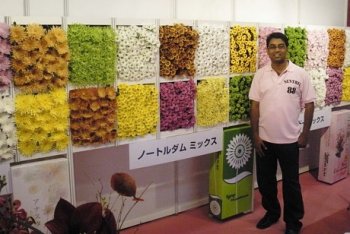
In the past two decades, the rose cultivation shifted from the Netherlands to Kenya. However, according to Senthil Kumaran of Asthor agricola, this sector immediately did not shift to Kenya. The evolution first moved from the Netherlands to Israel, then to Zimbabwe and reached Kenya in the late-1990s.
He concluded, "So, not Kenya, but Zimbabwe was a pioneer in the rose industry of Africa. However, due to several reasons/difficulties, this flower sector was unable to progress and moved to Kenya." Beginning in early 2000, Ethiopia started to cultivate roses. According to Kumaran, the African continent has a lot of potential for the horticulture sector. “After a Master’s degree in Horticulture in India, it has been an enjoyable journey in learning the professional life in Africa," Kumaran said.
Tanaflora Project
The Tanaflora project, in Bahir Dar, Ethiopia was the first and biggest project initiated by government along with the Development Bank of Ethiopia. The project was awarded and executed by the Spanish greenhouse manufacturer, Asthor Agricola, in late 2010s. It built a complete 40 ha – each one hectare sized greenhouses for rose cultivation with all necessary logistics like pack house and propagation facilities. "We were part of the project from scratch, right from the bush clearing," Kumaran said. "The General Manager, Dr.Alemayehu, and his team have made a lot of efforts to set up this project and it was a really challenging project for us also. This project developed the entire area for further investments and employs around 750 local employees (mostly women – 70 to 80% in total employees) at the moment and indirectly many more. This has helped to get rural employment leading towards an uplift of their economical conditions. I could witness their self-confidence by working in such projects and improve their skill developments. Besides business, such hi tech horticultural projects alleviates rural poverty by improving their skills in undeveloped areas of Africa, and gives lots of self satisfaction.”
Future for African horticulture
Kumaran said, “By suitable site selection at different geographical locations with appropriate micro climate conditions, according to selected horticultural crops, with good fertile virgin soils, enough water resources, the crop has no complaint except enjoying growing and delivering the best possible yields in Africa. Though it is very challenging, but it is possible with consistent efforts and bullet proof management systems.”
Source: Elita Vellekoop, FloralDaily



 Classifieds
Classifieds



